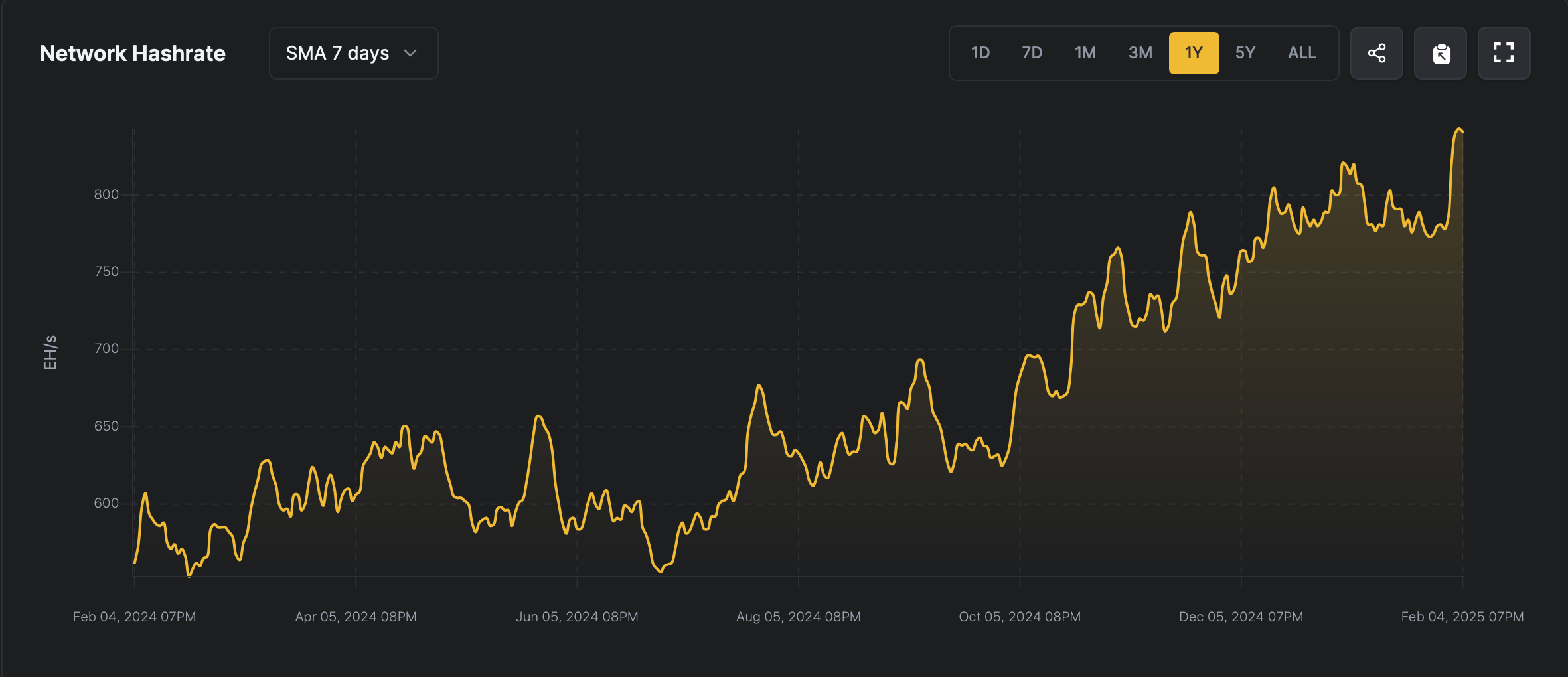As of Feb. 5, 2025, the rhythm of block creation has settled at an average of 9 minutes 36 seconds. Should this brisk pace persist, the protocol’s self-adjusting mechanism will enact a 4.6% upward recalibration in mining difficulty by Feb. 9—a shift estimations now deem probable. Notably, data from hashrateindex.com reveals Bitcoin’s seven-day simple moving average (SMA) scaled to a historic peak of 844 EH/s just one day prior, highlighting the network’s dynamic adaptability.

Source: hashrateindex.com
As of 1:20 p.m. ET Wednesday, Bitcoin’s transactional queue coasts along with 12,957 pending confirmations—a backlog spanning roughly eight blocks. Miners currently reap $57.56 per daily petahash per second (PH/s) in hashprice, a figure modestly retreating from recent monthly highs yet comfortably eclipsing the Jan. 5 benchmark. Simultaneously, high-priority fees linger at 4 satoshis per virtual byte (sat/vB), reflecting subdued network strain.
Four mining collectives command the computational arena: Foundry reigns supreme with 260 EH/s (32.4% of total output), trailed by Antpool (20.21%), Viabtc (14.85%), and F2pool (10.73%). Secpool, MARA Pool, Spider Pool, SBI Crypto, Luxor, and Braiins Pool complete the hierarchy. Bitcoin’s ecosystem thrives on equilibrium: miners calibrate efforts against oscillating rewards, while transactional demand whispers rather than shouts. The current lull in fee pressure and hashprice’s tempered glide reveal a network in momentary repose.

Source: bitcoin.clarkmoody.com/dashboard/
The impending difficulty hike, whatever it leads to, will compress miners’ margins, incentivizing efficiency upgrades or exits. Higher thresholds demand amplified computational investments, reshaping competitive hierarchies while reinforcing Bitcoin’s self-regulating architecture. If BTC prices stay low and the network difficulty spikes, it won’t be a good thing.
While Bitcoin’s recent block cadence maintains a brisk 9 minutes 36 seconds, a curious anomaly recently emerged: a glacial 88-minute gap separated blocks 882,331 and 882,332. Data from Dune Analytics reveals four such sluggish intervals exceeding 60 minutes in February 2025—quirks in an otherwise rhythmic cryptographic clockwork.
免责声明:本文章仅代表作者个人观点,不代表本平台的立场和观点。本文章仅供信息分享,不构成对任何人的任何投资建议。用户与作者之间的任何争议,与本平台无关。如网页中刊载的文章或图片涉及侵权,请提供相关的权利证明和身份证明发送邮件到support@aicoin.com,本平台相关工作人员将会进行核查。



